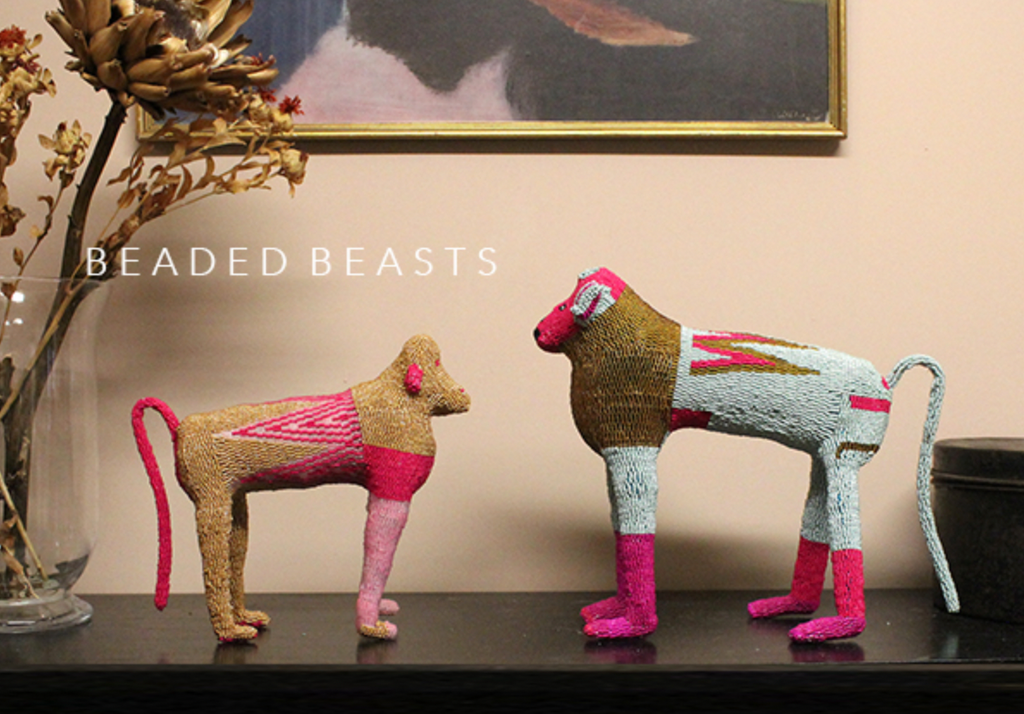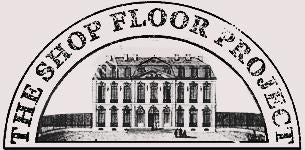Beaded Beasts | Story

Each year we spend time working with South African design collective Monkeybiz; commissioning, collecting and gathering to create some completely amazing pieces for our collection of Beaded Beasts.

Reviving the ancient craft of beading, the co-operative of women from South Africa form part of an extraordinary contemporary project which celebrates the art form. These striking handmade sculptures have been the subject of a sell-out exhibition at Sotheby’s and are held in the Smithsonian Design Museum - they are quickly gaining cult status.

Animals in our collections have included huge Modernist owls with rug-like patterns and expressive eyes, tall-eared rabbits, cockerels, sleepy rhinos, proud baboons and little piglets.


The creatures have a Modernist feel to them with their exaggerated forms, simple yet expressive faces and asymmetric patterns. They look striking displayed with other treasures and artwork, creating an eclectic cabinet of curiosities aesthetic.

The Beaded Beasts are made with wire armatures (above) which are then stuffed and then covered in a hand-beaded 'skin' in a riot of colour and pattern. The final result is a substantial sculpture which stands with presence and character.

The Patchwork Rhino (above)

The Green Faced Owl (above)

(Shangaan artist. N'wana c. 1950 University of Iowa Museum of Art - Symbols of Self: Art and Identity in Southern Africa)
Traditionally beads through the ages were used not only to adorn the body, but as a measure of value in ritual and economic exchange between locals and foreigners. In traditional African rituals, a fine bead necklace or beaded piece is treasured because it is thought to impart spiritual energy.

Colours are invested with meaning. For example, pink can denote poverty and the use of pink beads could mean: "you are wasting your money and have no cows" or poverty of feeling "You do not love me!". Messages are encoded on a huge range of artefacts including bags, belts, collars, headdresses, vessels.


When lockdown first hit in March 2020, the not-for-profit arts organisation found all of their orders from galleries around the world were cancelled and their iconic shop in the Bo-Kaap district was closed. They contacted us to see if would be interested in placing a large order, and after many pixilated Skype calls and virtual tours of the collections (with a force 10 winter storm raging outside their HQ and several power cuts later) we selected some of the most extraordinary pieces.

The new collection, and how we managed to curate it with MonkeyBiz during a pandemic, was then the subject of an article in The World of Interiors called Animal Assembly (March 2021)

Monkeybiz enthusiasts include Archbishop Desmond Tutu, designer Donna Karan and Nelson Mandela (who all appear on a documentary about their work called 'Bigger than Barbie' by Norwegian director, Tina Davis).

The Monkeybiz project reminds us of the Gee’s Bend quilters in the southern states of America whose work the New York Times said “are some of the most miraculous pieces of modern art America has produced.”

The same could be said of the MonkeyBiz collective, acknowledging their place in the history of South African modern art. The women create extraordinary works in their domestic spaces, often communally and imagine or recall patterns and colours from their surrounding environment and culture, abstracting them into ‘beaded hides’ with elaborate manes and exaggerated forms.

The collection featured almost one hundred pieces - the largest collection of Monkeybiz we have ever had. The collection included sculptural baboons which can stand at 45cm tall and often have a square of pink under the tail for the all important ‘pink bottom’! Other pieces include hares and rabbits with exaggerated forms of large bodies, small legs and huge ears. Often the face appears like a mask (the designs on the one above particularly looks like an antique rug). Lions with shaggy beaded manes, owls, elephants, giraffes, cockerels and more!

The pieces are extraordinary and range from large scale lions, elephants and warthogs to smaller indigenous animals like the dassie. We often describe them as looking as though they have been upholstered in fragments of woven rugs.

We also very lucky to have been able to acquire pieces by one of the most celebrated and collected artists in the co-operative, Zisiwe Lumkwana. A skilled maker whose work is often used for exhibitions around the world, Zisiwe's work is highly sought after. Trained as a healer she learnt beadwork from other traditional healers as they would create beaded adornments to wear in practice and training.

Making the sculptural wire armatures herself, characteristics of her work often feature of an exciting mix of fine beadwork, sophisticated colour combinations, exaggerated forms and in particular red beaded mouths, teeth made from loops of beads and careful attention to the eyes and the expression of the animal. Zisiwe's work can been seen in collections around the world.

As well as spending each year securing the best of the best pieces fresh from the artists' workshops, we have also been commissioning new works and shapes. Developing larger and more unusual pieces that we're very excited about.

The beaded patterns and colours all speak of the rich cultural language of shapes and symbols within African art. Geometric shapes such as diamonds, lozenges, triangular or square chequerboard, parallel zigzags, chevrons, dots, circles, curved lines and waves are all heavily represented, as are symbolic motifs which refer to the natural world such as crescents, stars, mosaics, flowers, fruit, seeds, pods and trees.

Image top left from AFRICAN TWILIGHT: Vanishing Rituals & Ceremonies of the African Continent
The extraordinary red beaded mane of the Modernist Lion (above) instantly brought to mind the red fringed folk costumes used in ceremonies and the fringed masks of Bobo people of Burkina Faso.

